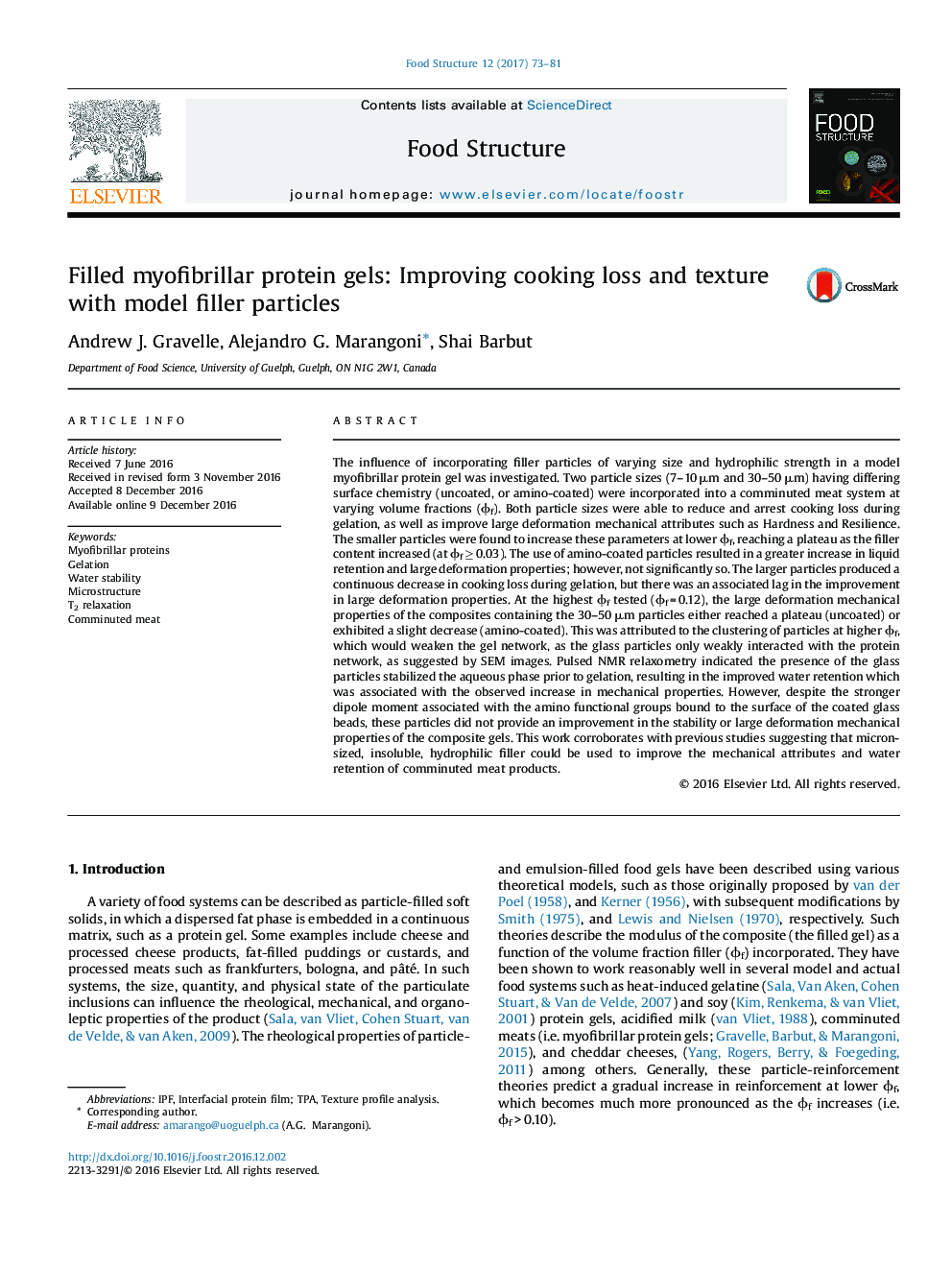| کد مقاله | کد نشریه | سال انتشار | مقاله انگلیسی | نسخه تمام متن |
|---|---|---|---|---|
| 6451803 | 1416527 | 2017 | 9 صفحه PDF | دانلود رایگان |
- Glass beads (7-10 μm or 30-50 μm) were incorporated into a comminuted meat product.
- Increasing filler content decreased cooking loss and increased textural attributes.
- Amino-coated glass produced a moderate improvement over uncoated particles.
- Glass decreased T2 relaxation time of water, improving stability during gelation.
The influence of incorporating filler particles of varying size and hydrophilic strength in a model myofibrillar protein gel was investigated. Two particle sizes (7-10 μm and 30-50 μm) having differing surface chemistry (uncoated, or amino-coated) were incorporated into a comminuted meat system at varying volume fractions (Ïf). Both particle sizes were able to reduce and arrest cooking loss during gelation, as well as improve large deformation mechanical attributes such as Hardness and Resilience. The smaller particles were found to increase these parameters at lower Ïf, reaching a plateau as the filler content increased (at Ïf â¥Â 0.03). The use of amino-coated particles resulted in a greater increase in liquid retention and large deformation properties; however, not significantly so. The larger particles produced a continuous decrease in cooking loss during gelation, but there was an associated lag in the improvement in large deformation properties. At the highest Ïf tested (Ïf = 0.12), the large deformation mechanical properties of the composites containing the 30-50 μm particles either reached a plateau (uncoated) or exhibited a slight decrease (amino-coated). This was attributed to the clustering of particles at higher Ïf, which would weaken the gel network, as the glass particles only weakly interacted with the protein network, as suggested by SEM images. Pulsed NMR relaxometry indicated the presence of the glass particles stabilized the aqueous phase prior to gelation, resulting in the improved water retention which was associated with the observed increase in mechanical properties. However, despite the stronger dipole moment associated with the amino functional groups bound to the surface of the coated glass beads, these particles did not provide an improvement in the stability or large deformation mechanical properties of the composite gels. This work corroborates with previous studies suggesting that micron-sized, insoluble, hydrophilic filler could be used to improve the mechanical attributes and water retention of comminuted meat products.
173
Journal: Food Structure - Volume 12, April 2017, Pages 73-81
